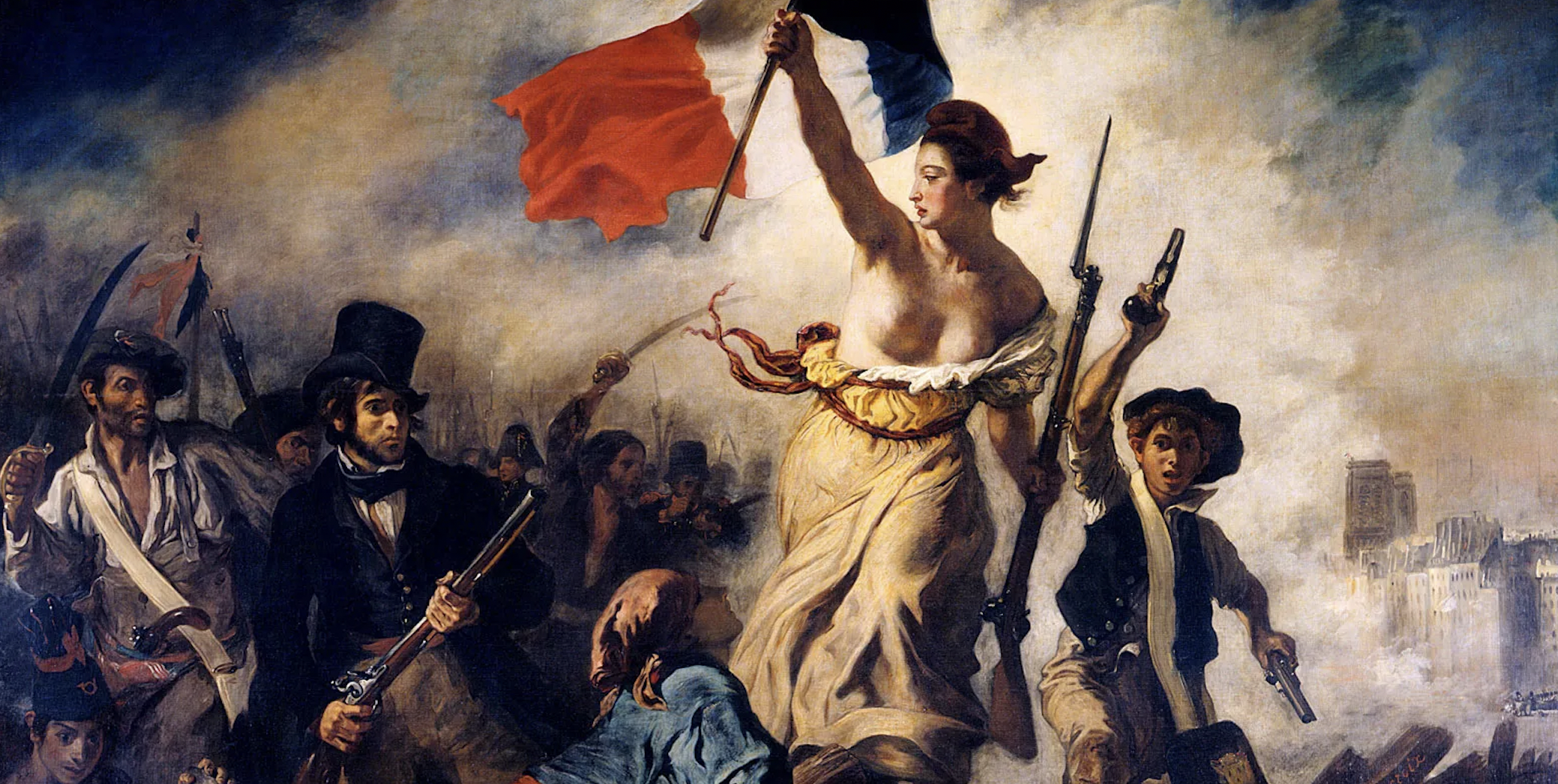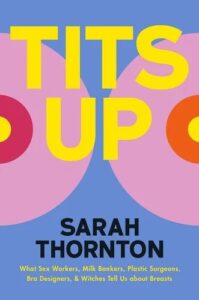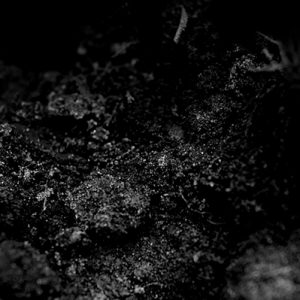During a holiday dinner a few years ago, the conversation turned to my boobs. No one in the family thought I should call them Bert and Ernie. My mother suggested Thelma and Louise; my daughter recommended her favorite comedians, Tina and Amy; my wife advocated Venus and Serena. My father, then 77, and my son, 22, exchanged eye rolls. They were new, these silicone aliens, and they didn’t feel female or even human. Nature gave me my first pair, while a high-ranking plastic surgeon had installed these impostors.
When I stood naked in front of a mirror, I thought: the rack on that woman looks pretty good. However, when I put on clothes and moved around, I felt estranged from my chest. I had never questioned the gender I was assigned at birth, but I now had a visceral inkling of the dissonance that a trans person might feel about unwelcome parts. Having a body that misrepresents one’s sense of self is unnerving.
I had a double mastectomy in 2018 and, without much thought, opted for the reconstruction covered by my health insurance. Rumor had it that my surgeon, a soft-spoken man at the top of his field, was a weekend painter—a doctor with an aesthetic sense. I told him that I wanted “lesbian yoga boobs,” meaning something between an A and B cup. “Think of them as A+ boobs,” I quipped. So, imagine my confusion and dismay when I was measured for my first bra post-surgery and discovered that my dysmorphia had a physical foundation. Bert and Ernie were, in fact, Ds.
When I observe women who relish their cleavage, I am delighted by their good fortune.The good news was that I didn’t have invasive cancer, but a load of rogue cells known as ductal carcinoma in situ (DCIS). Seven years of stressful biopsies were over and danger had been excised. Be grateful and ignore the Muppets, I told myself. Unfortunately, the psychology of having breasts is rarely so straightforward. With the mastectomy, I’d lost something inchoate, a vague mood linked to my gut instincts—my breast perception, for lack of a better phrase.
Before the implants, when I was cold or anxious or near a fearful height, when I was about to menstruate or had the potential to be aroused, my breasts would let me know. They had sensation and even a modicum of subjectivity. By contrast, these inanimate implants were blank. They were also too cumbersome and conspicuous for the person I thought of as me.
As an art history undergraduate, I was exposed to thirty thousand years of topless Venuses, nursing Madonnas, disheveled mistresses, and feminist self-portraits. Yet now, thirty years later, overcome by the identity pivot spurred by my new chest, one figure kept marching through my head: Liberty, particularly as depicted (below) in Eugène Delacroix’s Liberty Leading the People.

In this 1830 painting, a powerhouse of a woman holds a French flag in one hand and a rifle in the other. She is no victim of wardrobe malfunction; her two bare breasts affirm her bravery and symbolize the wholesome truth of democracy. But the work embodies a high-pitched irony. Despite their pleas and manifestos, women were denied the right to vote, own property, control their earnings, and gain entry to education. This Liberty is a decoy—a fictitious female who helps keep actual women in their place.
While Liberty’s bosom fused politics and aesthetics in novel ways specific to 19th-century nation-building, the shape and size of her breasts were nothing new. For millennia, the European ideal has been roughly the size of an apple, whether it was the medieval crab apple or the baroque Bramley. With the significant exception of gloriously busty Hindu goddesses, beauty was associated with modest breasts.
After World War II, the ideal American boob started to inflate. Was the mega-bust a perverse offshoot of the hyper-visualization of the body, brought about by pinups and Hollywood movies? Or was it the embodiment of a gender-polarizing ideology that sought to push women back into the home when men returned from military duty? During World War II, when American government propaganda incited women to help with the war effort, Rosie the Riveter had flirtatiously feminine eyelashes but a barely visible bosom.
Big breasts, as Rosie suggests, get in the way. They’re a pain in the ass. Since my new set arrived, I’ve been banging them into door frames, passersby in crowded streets, and men in elevators. Without full sensation, I often don’t know until it is too late that my numb nipples are poking into strangers or, worse, familiars.
Prior to reconstructive surgery, the only time my boobs had been unwieldy Ds was postpartum. I recall breastfeeding in the middle of the night, pondering the etymology of the word “nurse,” feeling connected to an ancient sisterhood of life-givers. Stupid with sleep deprivation, I also spent many hours empathizing with cows, puzzling over the existential strangeness that humans are called mammals when only women have mammary glands that make a nourishing supply of milk. In an androcentric world of man-made classifications, which generally emphasize the superiority of men, why this anomaly? Male breasts are decorative but useless. Indeed, for centuries, evolutionists pondered the mystery of the male nipple.
Although nothing made me feel more like an animal than breastfeeding, the act did not come naturally. It wasn’t quite “an exhausting servitude,” as Simone de Beauvoir once wrote, but it was certainly a duty. Breast milk, I read, was “liquid gold.” It would bolster my baby’s immune system, lessen his chance of allergies, and possibly even increase his IQ. Having been raised on fresh produce and home cooking, I was suspicious of the powdered fast food called formula.
With my second child, a girl, I developed a bad case of mastitis, an infection that resulted in recurrent fevers and green secretions. For a month, I pumped with a handheld device and cried over spilt milk as I threw the “expressions” of my left breast down the drain. Due to the infection’s persistence, I was referred to a specialist—an older English gentleman—in Harley Street, London. When I removed my heavily padded nursing bra, my jugs were so engorged that one of them shot out a jet spray of milk, hitting him on the collar. He was not amused. In his profession, he must have been sprayed before, but he acted like it was a uniquely grotesque affront. Why are lactating women simultaneously virtuous and distasteful?
This doctor was a relic, but at least he recommended antibiotics rather than puppies, which, in the 18th century, were sometimes placed on the engorged breasts of women with “childbed fever” to draw off the bad milk. Such was the fate of Mary Wollstonecraft, the founder of English feminism who, inspired by the French Revolution, wrote A Vindication of the Rights of Woman in 1792. Wollstonecraft died, aged thirty-eight, shortly after giving birth to her daughter, Mary Shelley, who went on to write the first medical horror story, Frankenstein.
My first personal experience of death was due to breast cancer. My maternal grandmother died in 1971 when I was five; I was shocked to see my British stiff-upper-lip mother cry. With this history, the decision to part with my breasts was not that hard. After seven biopsies over seven years and the continued discovery of dynamic masses of atypical cells, my doctors had reached the point where they couldn’t be sure that I didn’t have cancer. After two hematomas, a bruised rib, and an inflamed vein, I’d developed a fear and loathing of mammograms and biopsies. I had what they call “surveillance fatigue;” a double mastectomy felt like the only rational way forward.
In the month leading up to my surgery, I was anxious and remorseful. I usually swim indoors, but for their final outing, my breasts and I went to the Claremont Hotel in the Oakland Hills, which has two 25-yard pools. On that sunny Monday afternoon, as I swam my seventy-two lengths, I thanked them for being there. I apologized for failing to love them enough and asked them to forgive me for letting them go. Yes, it was weird. They swayed obliviously, alive to the moment but unaware of their impending doom. If they’d had the power of speech, their demands would have been simple: Let us float free. Release us from this imprisoning bikini!
Two days later, my breasts had departed for the mysterious afterlife of human tissue. Under my pectoral muscles, my surgeon had installed two saline-filled pillows called expanders, placeholders for my impending implants, which hurt like hell. While they squatted in my chest, I went back and forth on email with a friend, whose trans child had just had gender-affirming top surgery.
Our correspondence made me wonder: breast reconstruction, breast augmentation, and chest feminization are parallel plastic surgeries. Why do they have three distinct labels? Although my implant installation went by the name reconstruction, it was so similar to what a trans woman might undergo that my operation could be called a gender re-affirmation or re-feminization surgery. I was being outfitted with unambiguous, man-made “evidence” of my womanhood.
The day of my reconstructive surgery was unexpectedly enjoyable. Teams of conscientious, warm, smart people swooped in and showered me with reassuring attention. While I sat on a wheelie bed in a front-opening hospital gown, the anesthetist asked me nuanced questions about drugs, then parted with the promise that this would be the best general anesthetic I’d ever had.
The highlight of this pre-op drama came when my plastic surgeon showed up with a black sharpie and a hushed entourage of deputies and assistants. He asked me to stand up and then, with his left hand, he drew a short vertical line in the center of my chest, two long swooping lines in the creases under my former mammaries, and then half-moons along the top of each areola. The saggier breast, which had had mastitis and seven biopsies—“left is for loser,” I clowned gloomily—received a larger moon, suggesting that more skin would be cut away from it. Then he signed his initials over one and then the other breast, laying claim to his responsibilities.
After a bedridden week in which I watched every episode of The Handmaid’s Tale, I discovered that my round implants, measured in cubic centimeters, were from the “number 1 plastic surgery portfolio,” as Allergan advertised its Natrelle collection. Describing their corporate mission as “the science of rejuvenation,” Allergan claimed to “shape the future with you.” The language made me feel like a confused cyborg, resistant to my new and improved parts.
Only after Bert and Ernie Natrelle moved in did I wonder about my original breasts. Why did I know so little about them? What kind of life did they lead? What had I lost?
To my recollection, they made their debut on a summer’s day in the mid-1970s. Not yet a teenager, I imagined that my new assets might become a potent symbol of adult self-possession or a source of mesmerizing power. I remember vividly the best-selling poster of the period, published in 1976, depicting the decade’s premier sex symbol Farrah Fawcett in a one-piece Norma Kamali bathing suit that rejoiced in her unshackled, laissez-faire nipples.
When I was fifteen, however, my breasts underwent a sobering blow. Tired of babysitting, I took a job as a busser at the local golf club. The kitchen’s autocratic ruler was the head chef, who drank on the job. One lunchtime, I was walking through the kitchen with a tray loaded with clean cups and saucers when he obstructed my path and planted his palms on my breasts. His eyes blazed smugly. We knew that I would be the one to get in trouble if I dropped the tray, smashing the china. It was a sad day for my top half—a humiliating initiation to sexual aggression.
I now had an overwhelming desire to understand the multifarious meanings and uses of breasts.About a year later at a sleepover, my boobs were again manhandled without my consent. My school friend and I were sleeping on couches in the living room of her sister’s downtown apartment. In the middle of the night, I woke up to a giant naked man (the older sister’s much older boyfriend) whose huge hands were rummaging in my pajama top. I rolled over and told him to go back to bed in as authoritative a voice as I could muster. He was so high that his eyes were devoid of consciousness. For an interminable hour, I lay on my stomach, scared stiff, while he wandered around the living room.
For decades, I forgot about those vacant eyes… until Brett Kavanaugh’s confirmation to the Supreme Court. Like Christine Blasey Ford, I’d had sleep disturbances—indeed, chronic insomnia—for several years. My assaulter probably had little or no recall, and I didn’t tell my parents. Two insights reactivated by the #MeToo movement are the power of speaking out and the value of consciousness-raising. So here I am, delving into the personal as a means of figuring out the political.
I was sixteen, still a virgin, and my breasts had become defeated fools—boobs in the literal sense—that needed to be buried under oversized sweaters. Oh, how I wish that “boobs” had some of the power and self-determination of “assholes” and “cunts.” When I observe women who relish their cleavage, I am delighted by their good fortune. Breasts and chests are the front and center of body positivity.
For many years, I held a haughty feminist prejudice against boob jobs, which I associated with insecurity, vanity, and a slavish desire to appeal to men. However, my gender re-affirmation surgery has wiped away that judgment. A few people have implied that I’m a femme conformist, who should have resisted reconstruction and taken the braver route of going flat.
However, I’ve never managed to achieve, let alone maintain, a politically correct identity. It only seems fair to give my sisters some slack. Breast augmentation is the number one plastic surgery in the world. Is it a survival tactic in a patriarchal society where beliefs are embodied? Or a way that women try to wrest control over the perceived meanings of their flesh?
Which brings me back to my 34Ds. Finally, the day arrived for my follow-up appointment, to which I wore a T-shirt that said, “We rise by lifting others.” I assured my surgeon that I understood that my new boobs looked good, but I also tried to convey how they didn’t feel right. The implants were under my muscles, so they swung into my armpits when I did a chaturanga, or yoga push-up. This “animation,” as surgeons call it, compounded the feeling that my breasts were bulky and cartoony.
My plastic surgeon, in turn, explained three things. First, even months after the surgery, it was possible that my breasts were still swollen. Second, a primary part of his job with nipple-sparing mastectomies like mine was to keep the nipple in the center of my breast. Third, he had to be careful to “fill the pocket” without cutting too much away in order to avoid “skin death.” As he spoke, I had a déjà vu; we’d had this conversation before. I’d lost my grip on its contents during my post-operative opioid haze. I empathized with the difficulties of his craft but was perplexed that state-of-the-art medical practice had given me the boobs of a lactating mother rather than the small dignified orbs of my middle-aged dreams. Something was wrong with the system.
One of my neighbors had breast reconstruction four times. Her breasts were always too big until she found Dr. Carolyn Chang, a surgeon she described as “a petite woman who understood my desire for a cute B cup.” Through the art world, I learned that Chang worked on a lot of the most expensive racks in the San Francisco Bay Area, and curious about what she would make of my bust, I obtained a consultation with her. Her white-walled office was strewn with art and photography books that suggested that she was a fashion-conscious scholar of attractiveness.
During my topless exam, Dr. Chang moved her head around, assessing my shape from angled perspectives, as if she were an artist preparing to sculpt from life. She assured me that, objectively, this was an excellent result. Minimal scars. A naturalistic shape. No excessive rippling. When I mentioned my discomfort with their size, she nodded kindly. She lifted my right breast, then my left, as if calculating their exact weights with her hand. She tested their density and bounce by applying gentle pressure with three fingers at their sides and centers. Then she looked me in the eye and inhaled deeply before saying, “The enemy of good is better.”
In a follow-up call, Dr. Chang put it more bluntly. “A mastectomy is an amputation. Losing a body part is a severe trauma. Amputees wear prostheses to make them feel normal,” she explained. “But it takes time.” With these words, I realized that Bert and Ernie, those alien goofballs, were already being absorbed into a revised me, a human with plastic parts who had embarked on a new quest. I now had an overwhelming desire to understand the multifarious meanings and uses of breasts.
__________________________________

From Tits Up: What Sex Workers, Milk Bankers, Plastic Surgeons, Bra Designers, and Witches Tell Us about Breasts by Sarah Thornton. Copyright © 2024. Available from W.W. Norton & Company.



